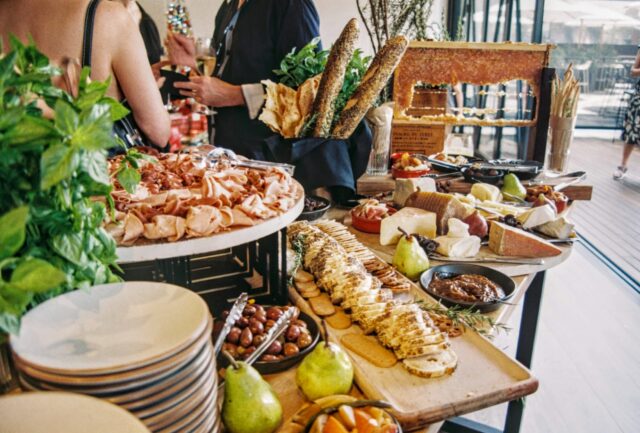When we visit a restaurant, we do not go there simply because we are hungry. In addition to delicious food, we want to enjoy a whole experience complete with nice décor, friendly staff, and pleasant background music.
Such an experience always begins with a look at the menu. Consciously or not, the way in which dishes are presented on paper has a direct influence on our expectations for the upcoming meal. For example, torn pages or greasy fingerprints leave us wondering whether the kitchen looks equally run-down and dirty. Brand-new bindings with an elegant design, on the other hand, immediately evoke the image of a sophisticated establishment. In this article, we have compiled the best tips for ambitious restaurateurs in need of innovative and yet uncomplicated menus.
Create a feast for the eyes
When food looks unappealing, we won’t eat it. This holds true for toddlers as much as gourmet critics. If you want to trigger your customers’ appetite, you need to start with the visual presentation of your offerings.
Design something special and try to reflect the spirit behind your business. Individual options include:
- spiral-bound or saddle-ditched copies
- different folding options
- small-sized inserts for current specialities
- reader-friendly placemats.
Whether you run an upscale restaurant or a low-key diner – comfort is always key in the hospitality business. With this in mind, your menus not only serve to provide customers with information about the food available. Beyond that, a deliberate choice of font, colours, and illustrations will help customers to feel right at home.
Less is more
Many restaurateurs fail to keep their businesses running because they focus on quantity instead of quality. Remember: The more items you list on your menu, the more you need to buy, store, and keep fresh. An exhaustive variety of dishes may also lead customers to assume that you do not prepare all of your meals from scratch. Hence, try to narrow down narrow down your range of ingredients as much as possible. This way, you will spend much less time and money on deliveries and preparations. Even if you only use a limited amount of ingredients, you can still experiment with numerous variations. Just think of the countless ways in which you can turn a piece of chicken into a delicious meal: grilled chicken salad, chicken breast sandwich, chicken tortilla wrap … the list goes on and on!
Let customers choose
While you should not put too many items on your menu, you still need to give customers the feeling that they can have whatever they want. For this purpose, you can simply enhance your standard dishes with optional choices:
- salads with different types of dressings
- a variation of sides to complement main dishes
- extras like truffle oil or bacon to upgrade a meal
Such and similar supplements enable you to tend to your customers’ unique wishes without hindering the workflow in your kitchen or increasing your expenditure. They also add an interactive element to the culinary experience and will thus help to generate a cordial rapport between customers and staff.
Healthy is the new tasty
Nowadays, fitness has become a number-one priority for people of all ages. In order to keep up with this trend, your restaurant needs to serve food that not only tastes good, but more importantly makes consumers feel and look good. As you should minimize your range of ingredients anyways, try to avoid artificial additives and focus on fresh, regional produce. By way of example, you can always complement your standard menu with daily specials including seasonal vegetables like pumpkin in October or asparagus in May. In addition, you must also consider that you may serve people with various allergies or intolerances. For such instances, make sure to incorporate gluten-free, dairy-free, or even vegan alternatives into your menu. Furthermore, you can mark all dishes with certain symbols (i.e. a pig for “meat” or a leaf for “vegetarian”) and thus facilitate the decision-making process.
Double-check your numbers
While you should aim for a polished design, the actual content of your menus is just as important. Typing errors and incomplete or even incorrect information can seriously affect the overall appearance of your restaurant. Before printing the final menu, you should therefore always ask a trusted friend or business partner to proofread the whole text. Lastly, you must also ensure that your product range will yield enough profit on a long-term basis. Keep in mind that you do not only pay for the food itself, but also for your staff to cook, serve, and clean up afterwards. Therefore, you need to charge at least three times the actual food cost for a finished meal.

